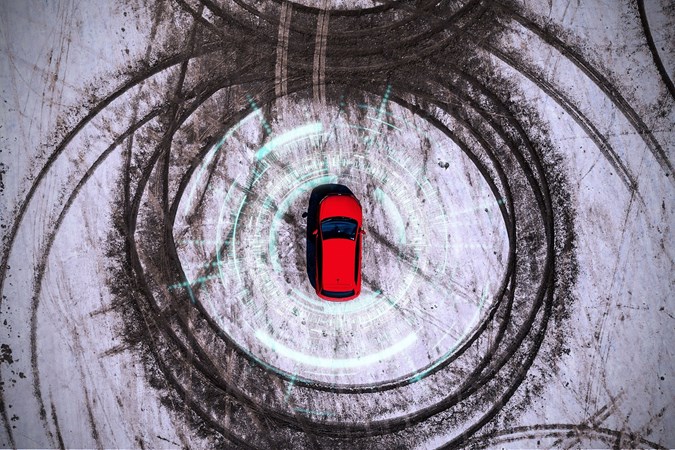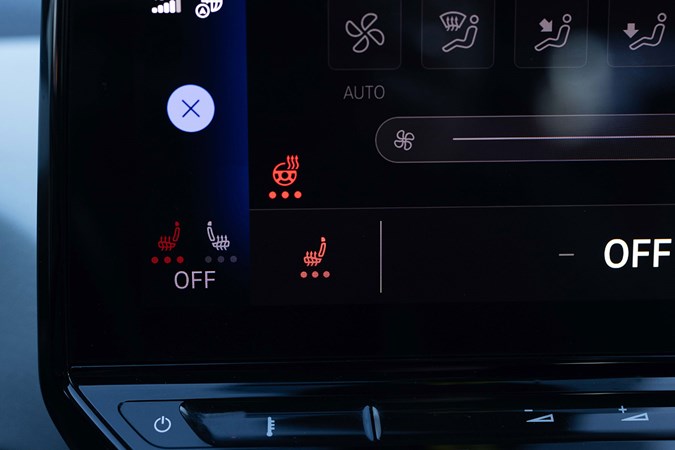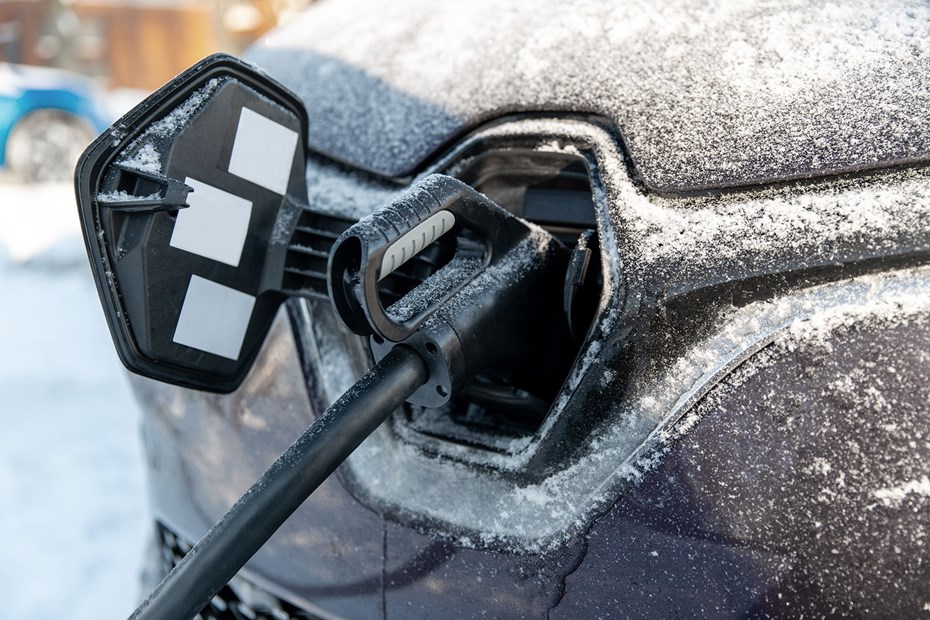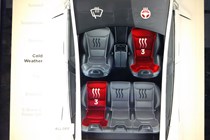The driving range of electric cars is perhaps the most important stumbling block for those raised on a diet of easily refuelled petrol or diesel cars. Many motorists forget to factor in the efficiency of electric cars in winter, as cold temperatures can significantly restrict the useable battery range.
The chemistry of EV batteries means that the bold claims in adverts are adversely affected when the mercury plummets – and Parkers’ research suggests that electric car range can typically drop by as much as a third in winter.
In this advice article, we explain what to look out for, how to calculate a real-world EV range and provide some hints and tips to keep your electric car ready for a typical British winter.
Are electric cars good in snow?
In many regards, EVs are just normal cars and behave much like any combustion vehicle in wintry conditions. They will start up, demist and drive much like any normal car when the temperatures drop below freezing – though you’ll benefit from niceties such as pre-heating of the cabin.

Most EVs come with pre-programmable heating functions, so you can warm your car up – and defrost the windows – while they are plugged in on the driveway, saving precious battery range and making the cabin nice and toasty in advance. It’s a huge boon of running an electric car in winter and you’ll feel very smug climbing onboard.
They are quite heavy, however, so be mindful of the handling on slippery surfaces; those heavy batteries can act as an uncontrolled mass if you fall into a skid. As with any car, we recommend winter tyres or all-seasons rubber to find better grip in icy conditions.
Electric cars in cold weather: the range question
All EVs come with a typical battery range quoted, using the industry-standard WLTP official test. It’s a way of expressing an estimated real-world driving range on one charge. However, we have lived with enough electric cars to understand that these figures are often optimistic — especially in winter.
Parkers lived with a Mazda MX-30 for half a year and found its maximum range to be closer to 90 miles in the cold, compared to 110 miles in the summer. It has a small 35kWh battery – the same size as the diminutive Honda E city car (below), whose range dropped from 100 miles to 80 in the depths of winter.

It’s the same story with other EVs we lived with for extended period of times, including those with bigger batteries: a Tesla Model S (250 miles in winter, down from 265 in summer) and Cupra Born (180 miles, compared with 270 in warm conditions) show that all EVs are affected.
The message is clear: if you live in an area that usually suffers harsh winters and cold conditions, be prepared to factor in a dramatically lower EV range during the chilly months.
EVs in winter: official data
Most manufacturers do not highlight this restricted range. However, Citroen helpfully provides an official range calculator, showing the e-C4’s range in different temperatures:
- Electric range, 20C: 217 miles
- Electric range, 10C: 194 miles
- Electric range, 0C: 175 miles
- Electric range, -10C: 141 miles
This official data suggests that in seriously cold conditions, the e-C4’s battery becomes 35% less effective – wiping a significant 76 miles off the range.
Similar tests by the Norwegian Automobile Federation (NAF) draw the same conclusion. It found that the Mercedes EQE 300 and Skoda Enyaq Coupe RS saw their range fall by a third in extreme cold.
What you can do to boost your EV’s range in a cold snap
Our main advice is to charge up your electric car at home overnight, using off-peak electricity to lessen your energy bills. Starting with a full battery is the best way to extend the range of your electric car. Similarly, pre-heating the car while it is plugged in is the best way to prepare your EV for a drive in wintry conditions – meaning you are not drawing from the battery capacity.

Once you’ve unplugged and started consuming battery power, think carefully about which accessories you use. Heated seats might be nice, but they’ll drain your battery quicker and lead to a shorter range, so be discerning over which gadgets and bits of equipment you use on the go.
If you don’t believe us, try flicking your hot seats or heating off and watch the range meter react; it will often extend the range of your EV by 10 or 20 miles. With electric cars in winter, it really is a case that you can’t have your cake and eat it!
FAQs
Are EV tyres different from regular car tyres in winter?
EVs are generally heavier than petrol or diesel vehicles, so winter tyres can be beneficial in cold weather to improve grip and handling. Many EV owners opt for all-season or winter-specific tyres to maintain performance on icy or snowy roads.
Should I change my driving habits in winter to conserve range?
Switch to eco mode, ease off the throttle, and keep your trips shorter if you can. Planning a few charging stops along the way will also keep your journey stress-free in chilly conditions.
Can cold weather permanently reduce my EV’s battery life?
Winter driving won’t harm your EV battery in the long run, but long-term exposure to extreme temperatures — whether freezing or boiling — can gradually affect its health. Luckily, most EVs have built-in battery management systems to keep things running smoothly, so you can stay on the road without worry.
Should I keep my EV plugged in overnight in winter?
If possible, keep your EV plugged in overnight. It helps maintain battery temperature and stops you from losing too much range in the cold. Some models let you schedule charging or preheat the cabin and battery, so you’re ready to go without wasting power on the move.
Will regenerative braking still work in cold weather?
It depends on your EV. Some models dial down regenerative braking when the battery is cold, so you might need to use the brakes more until things warm up. Check your car’s settings — some let you tweak the regen levels yourself.
Browse Parkers’ electric and hybrid car reviews
Just so you know, we may receive a commission or other compensation from the links on this website - read why you should trust us.














